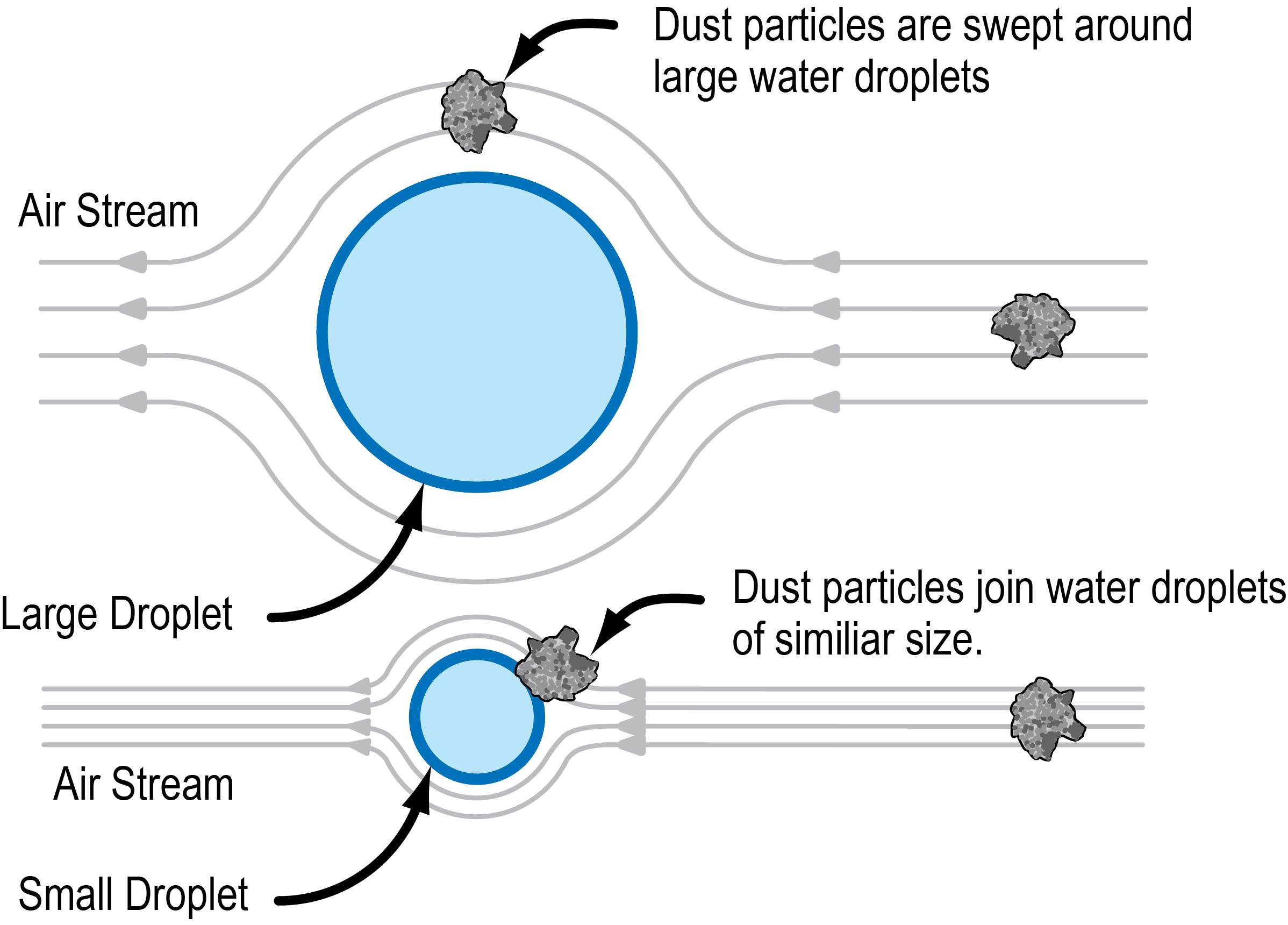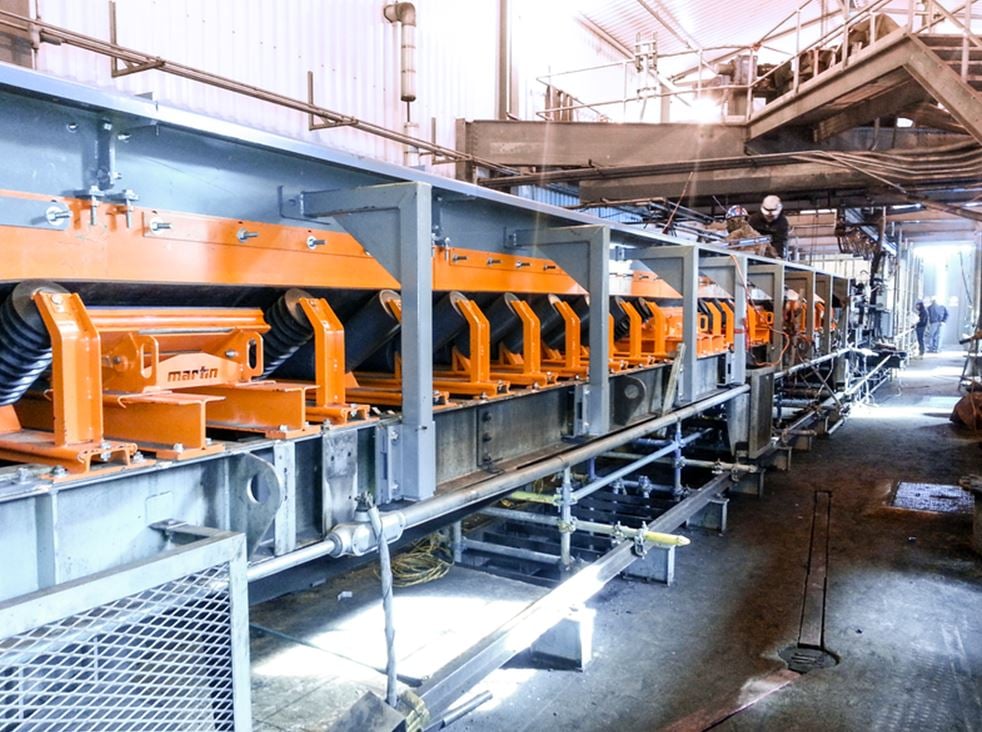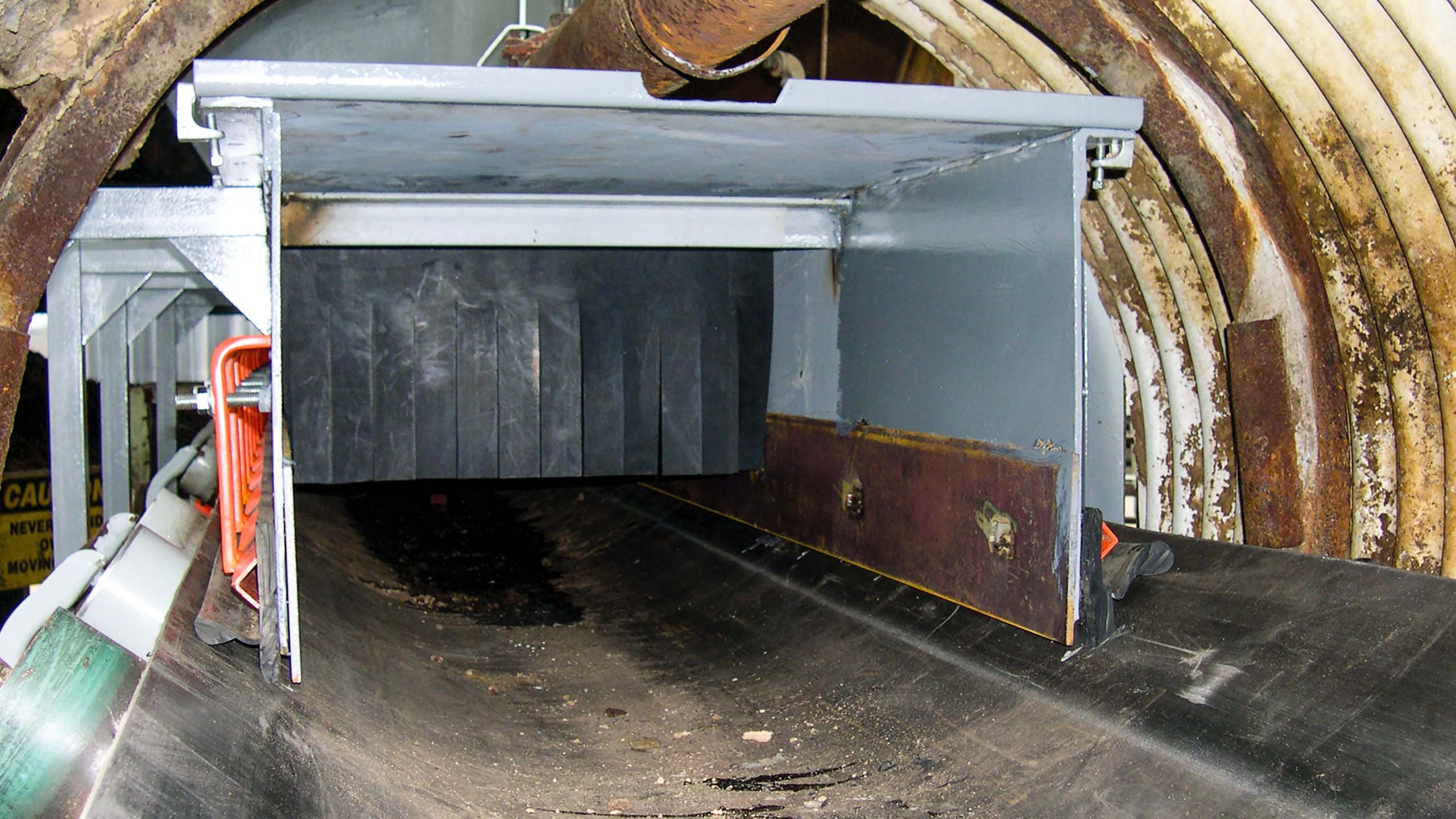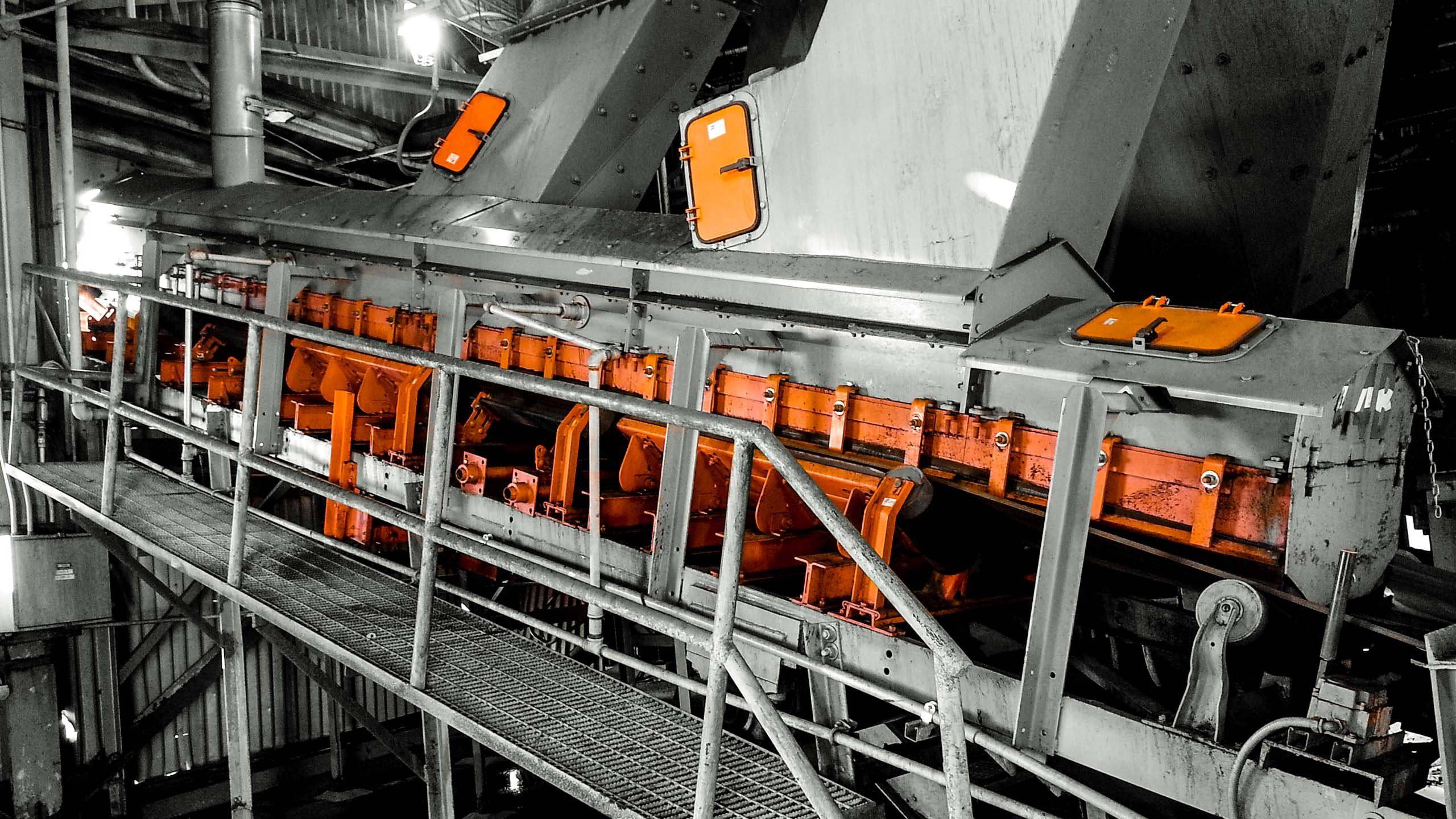With Water, Less is More
A water spray may appear to be the most inexpensive form of dust control available, as process water is available almost free in many operations, and it can be applied through low technology systems. This cost justification can be a false assumption, as the addition of water may adversely affect materials handling operations.
Many bulk materials are hydrophobic they have a high surface tension and are averse to combining with water. In an effort to achieve effective suppression, the amount of water is increased. Because the material does not mix well with water, some particles will remain dry, and others will become very wet. The dry material will continue to create dust, possibly leading to the addition of even more water, worsening the problem. The overly wetted material will lead to handling problems, including accumulations on chutewalls, plugged screens, reduced efficiency and shortened wear life on crushers, and carryback on conveyor belts. Excess water may promote belt slippage and belt mistracking, and it may increase the possibility of wet (hence, sticky) fines accumulating within chutes and around the transfer point. When applying water to materials on conveyor systems, a good axiom is "less is more."

Another problem occurring in "process water" dust suppression systems is the possibility of excessive moisture in the materials, which can downgrade performance in power generation or other thermal processing systems. Excessive water added to coal and coke used for boiler fuel results in a thermal penalty that can have a detrimental effect on utility heat rates. The more water added, the greater is this penalty.
The Thermal Penalty for Added Moisture
There is a substantial performance penalty added to combustion and other thermal processes when the water content of the fuel is significantly increased. In applications like coal fired power plants and cement plants, water added to the material going into the process must be "burned off" by the process. This can dramatically reduce operating efficiency and increase fuel costs.
Some bulk materials are susceptible to naturally varying moisture contents from their exposure to weather in storage or during transport. Many bulk materials, such as coal, are hygroscopic meaning they can absorb moisture from the air. Coals have the capacity to absorb free moisture at levels ranging from 2 to 45 percent of their weight. This absorption occurs rapidly, with between 1.5 and 5.5 percent weight gained in the first 15 minutes of exposure. A steady state occurs within 3 to 5 days of exposure. Often these natural changes are much more significant than the amount of water added by a well designed and maintained dust control system. Any added water can present an added cost to the system and affect heat rate and plant efficiency; therefore, efforts to minimize moisture addition should be carefully considered.
With the thermal output of coal ranging from 16,300 kilojoules per kilogram (7,000 BTU/lbm) for lignite to 27,900 kilojoules per kilogram (12,000 BTU/lbm) for bituminous coal, a power plant loses roughly the heat from 1 to 1.5 kilograms per ton (1.9 to 3.3 lbm/st) for every one percent of moisture added in the coalhanding operation. The plant must purchase, handle and burn additional fuel to compensate for the added moisture.
Improving Water Based Suppression
Because a water only spray system requires a high volume of moisture addition for effective dust suppression, it applies a high thermal penalty. Significant quantities of water can also create problems in materials handling.
Other methods to improve water based dust suppression while limiting the addition of moisture should be considered. These solutions include generating a fine mist or "fog" spray, or using chemical additives to modify the water.
See Also: Water Suppression to Control Belt Conveyor Dust Part Part 1.




















Leave Comment